
There’s nothing more satisfying to a gardener than growing more of the plants you love and doing it from scratch. Whether you’re growing new specimens from a houseplant you already have or rooting a precious cutting of a rare species, the sight of new roots and shoots always gets a plant lover’s heart pounding. While starting plants from seed is certainly gratifying, seed propagation isn’t always practical or possible when it comes to houseplants. Vegetative propagation, or taking cuttings, is often the best and only viable propagation method that home gardeners can use to make more of their favorite indoor plants. This method is also necessary when you want exact copies of the plant you already have, especially if that plant happens to be a hybrid. Here are five different types of cuttings you can take to propagate houseplants. Each method is suitable for different situations and different plants.
1. Stem-tip cuttings work for most houseplants
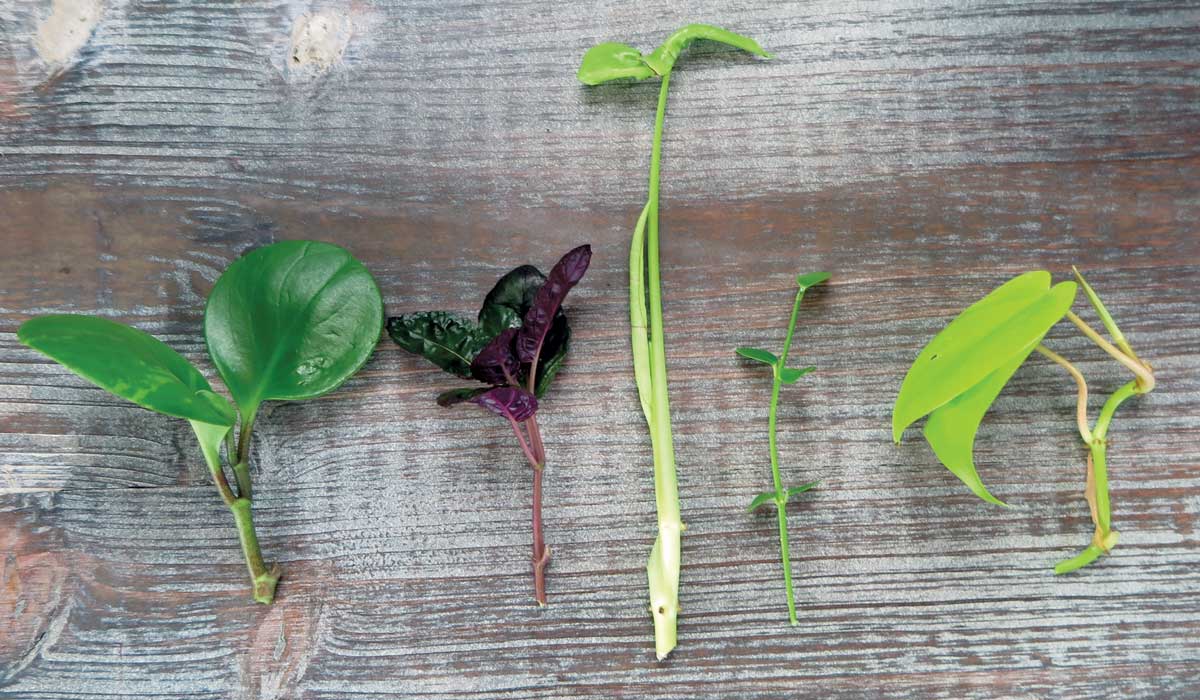
Stem-tip cuttings are herbaceous or softwood cuttings that include the terminal bud of a plant shoot and typically two to three nodes. You can propagate most of your houseplants with stem-tip cuttings. Choose a healthy, flowerless shoot from the mother plant, then make a clean cut using a sharp tool that’s 3 to 5 inches below the shoot tip. Remove any additional lateral stems (side shoots) and the lower leaves. Depending on the species, new roots may develop at a node or from a callus that develops on the wounded portion of the stem. You can then insert the cutting into potting mix or another growing medium where it will quickly develop new roots.
Houseplants it works for
- Ficus (Ficus spp. and cvs., Zones 6–12)
- Monstera (Monstera spp. and cvs., Zones 10–12)
- Philodendron (Philodendron spp. and cvs., Zones 9–12)
2. To make use of the rest of the stem, take advantage of leaf-bud cuttings

Leaf-bud cuttings are like stem-tip cuttings, except you are missing the terminal bud of the stem. If you can take a stem-tip cutting from a plant, you can take a leaf-bud cutting from it as well. If you’ve already taken a stem-tip cutting from a plant shoot, you can then take leaf-bud cuttings farther down the stem. To take a leaf-bud cutting, make two cuts: one below and one above a leaf node. The leaf-bud cutting should include a small section of stem, a node, and an axillary bud. You also can take a heel cutting by cutting out the node and leaf with a section of the main stem tissue attached. Insert the piece of stem that is below the leaf node (closest to the crown of the plant) into the water or rooting medium. A callus will develop, and new roots will develop from the cut portion of the stem; a new shoot will emerge from the axillary bud in the leaf axil. As with stem-tip cuttings, most houseplants can be propagated from this method.
Houseplants it works for
- Ficus
- Monstera
- Philodendron
3. For thick-stemmed plants, use cane cuttings
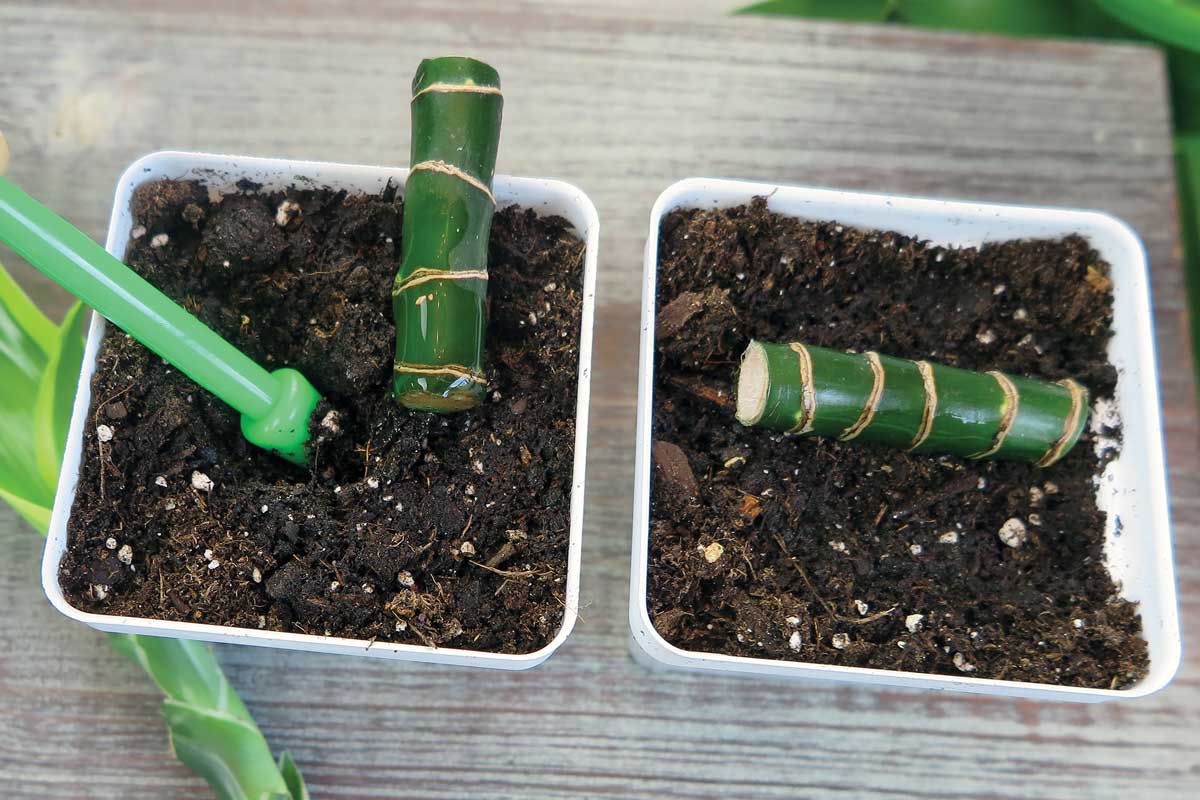
Cane cuttings, which are a type of stem cutting, are an effective way to propagate houseplants that grow thick, sectioned stems. Upright monopodal orchids can also be propagated by removing a section of cane. Cane cuttings are the perfect way to start over with a houseplant that has become leggy or developed an otherwise unattractive growth habit. Remove a 2- to 3-inch section of older main cane without any leaves. You can place the cutting in water or on top of a growing medium either vertically or horizontally (pictured). If horizontally, be sure to bury about half of the cane. Make sure there is a node with an axillary bud facing up and away from the growing medium.
Houseplants it works for
- Corn plant (Dracaena spp. and cvs., Zones 9–12)
- Umbrella tree (Schefflera spp. and cvs., Zones 10–12)
- Ficus
- Monopodal orchids, including plants in the genus Dendrobium (Zones 9–10)
4. Leaf-petiole cuttings don’t require any stem
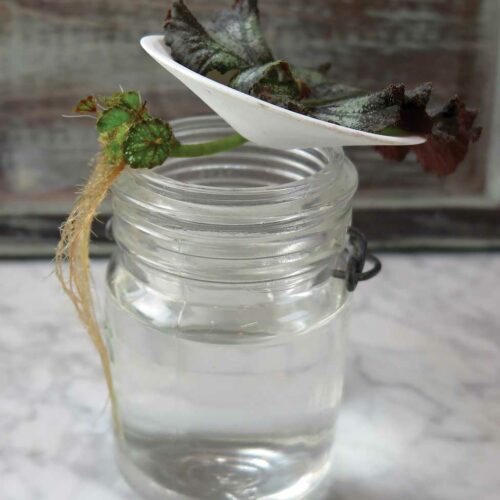
Certain houseplants are capable of being propagated via leaf-petiole cuttings. These species can grow new adventitious roots (roots that form from any non-embryonic or nonroot tissue) and bud shoots directly from the leaf petiole without sacrificing any stem. Simply cut away a leaf with a section of its attached petiole, then place the cut portion of the petiole into water or a rooting medium. A callus will develop on the wounded petiole, from which new roots and then a new bud shoot will develop. If you root a leaf-petiole cutting in substrate or potting mix, the new bud shoot will emerge from beneath the surface. If you so choose, you can then snip off the new plantlet with its roots from the original petiole.
Houseplants it works for
- Begonia (Begonia spp. and cvs., Zones 6–12)
- Radiator plant (Peperomia spp. and cvs., Zones 10–12)
- Gesneriads, including African violets (Streptocarpus sect. saintpaulia, Zones 10–12)
5. Use whole-leaf cuttings for succulents
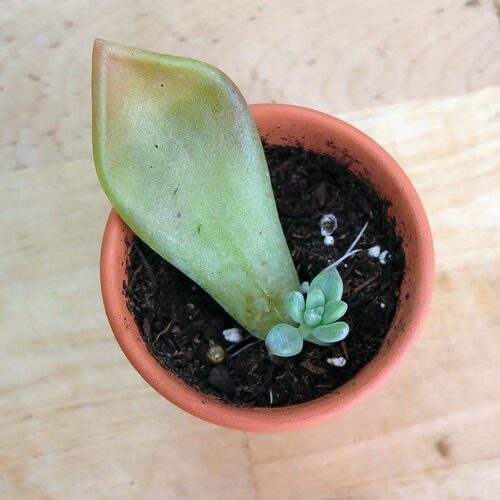
Some houseplants can grow new roots and bud shoots from the cells at the very base of their leaves, without a petiole attached. Many succulents naturally have sessile leaves (leaves directly attached to the stem with no petiole) and are thus easy to propagate from whole-leaf cuttings. If a leaf falls from your plant, or you remove it from where it attaches to the stem, just make sure the base of the leaf is intact. You can allow fleshy succulent leaves to dry and callus over for several days, then set them lightly on top of a rooting medium. Don’t water until roots begin to form. However, whole-leaf cuttings of plants such as begonias or African violets may need some moisture or even a humidity dome.
Houseplants it works for
- Begonia
- Gesneriads
- Succulents
| Basics |
Learn the Lingo
The discussion of propagation involves a number of terms you may not be familiar with. Here are some concise definitions to help you become a successful propagator.
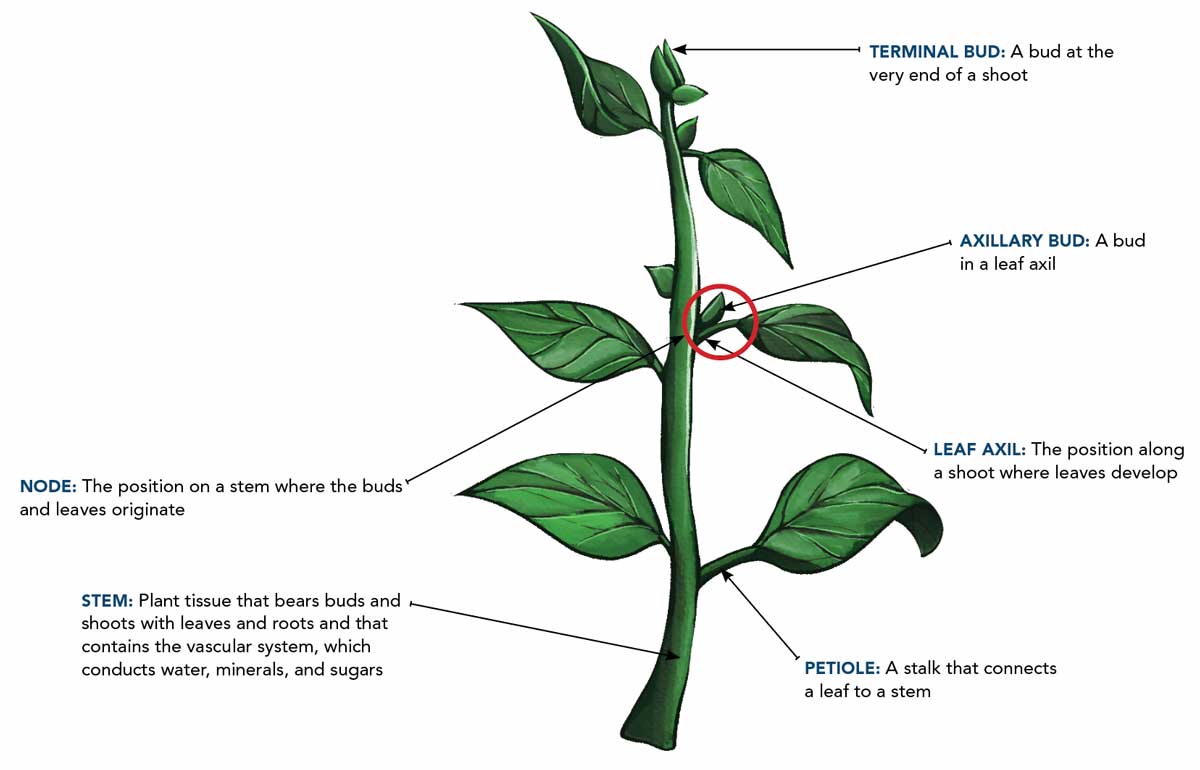
Leslie F. Halleck is a horticulturist and author of several books, including Plant Parenting: Easy Ways to Make More Houseplants, Vegetables, and Flowers and Tiny Plants: Discover the Joys of Growing and Collecting Itty-Bitty Houseplants.
Fine Gardening Recommended Products
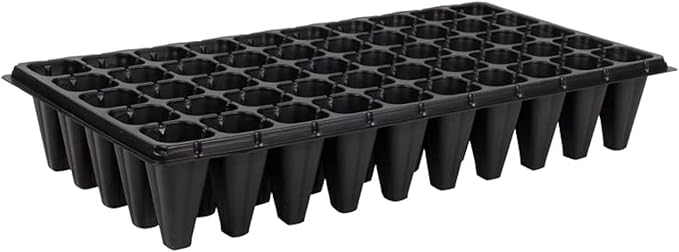
Nothers RooTrimmer 50 Cell, 10pcs
Fine Gardening receives a commission for items purchased through links on this site, including Amazon Associates and other affiliate advertising programs.
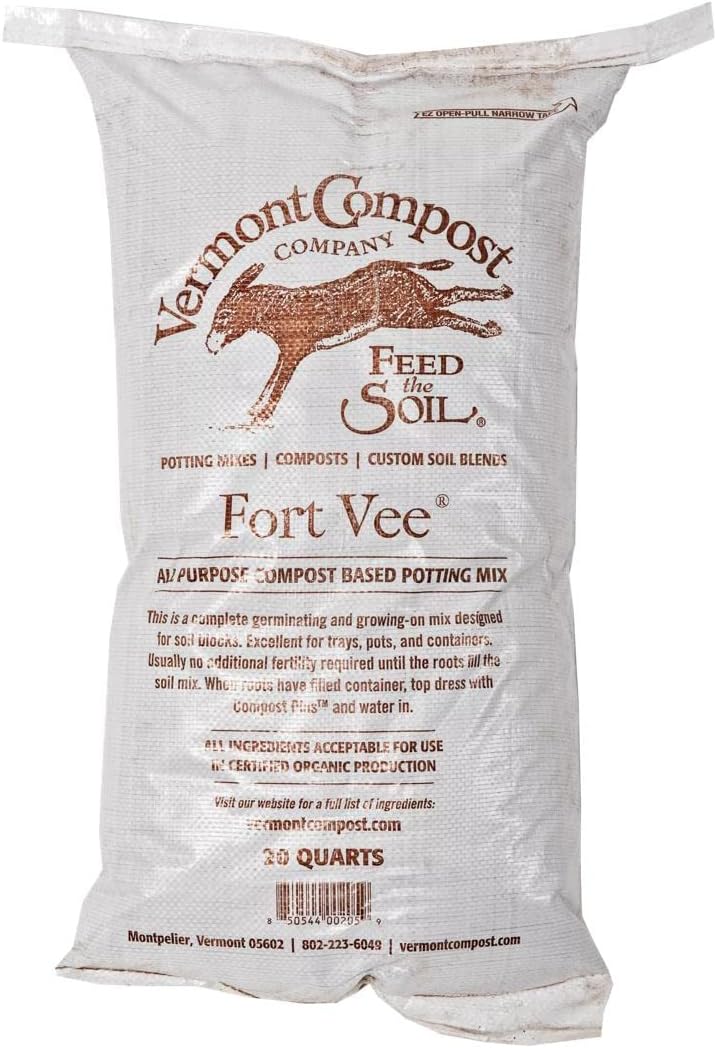
Fort Vee - Organic Potting Soil Mix
Fine Gardening receives a commission for items purchased through links on this site, including Amazon Associates and other affiliate advertising programs.

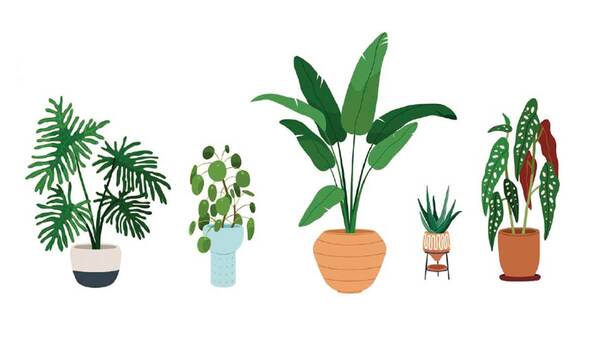


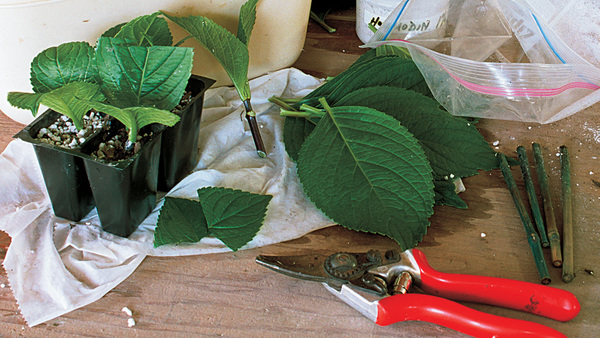













Comments
Log in or create an account to post a comment.
Sign up Log in